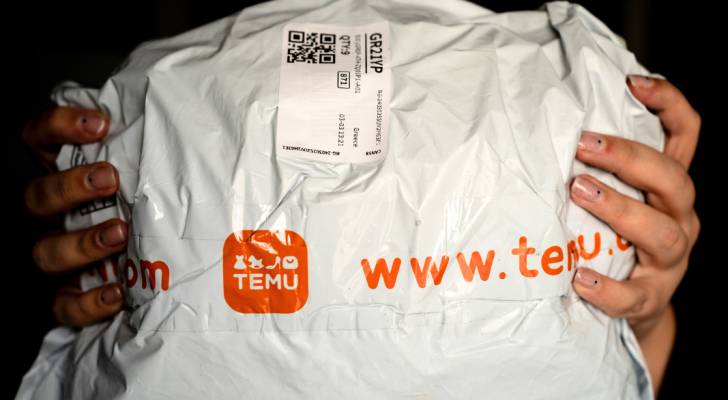
Rena Scott doesn’t think twice when it comes to shopping on the infamously cheap site Temu. In fact, she usually has 10 to 12 orders going at a time.
“Everything here has come in from overseas anyway, so you’re just cutting out the middleman, like the Walmarts, the Amazons,” the retired registered nurse from Virginia tells CNN.
Don’t miss
- I’m 49 years old and have nothing saved for retirement — what should I do? Don’t panic. Here are 5 of the easiest ways you can catch up (and fast)
- You’re probably already overpaying for this 1 ‘must-have’ expense — and thanks to Trump’s tariffs, your monthly bill could soar even higher. Here’s how 2 minutes can protect your wallet right now
- Gain potential quarterly income through this $1B private real estate fund — even if you’re not a millionaire. Here’s how to get started with as little as $10
But when the Trump administration slapped a 145% tariff on Chinese imports — and a 10% minimum tax on goods from all other countries — “cheap” became a relative label. Temu and Shein raised prices on a lot of their most popular products just ahead of the May 2 tariff deadline.
“I can’t afford to buy from Temu now, and I already couldn’t afford to buy in this country,” Scott said in late April.
Two weeks later, the Trump administration and Chinese leaders agreed to temporarily slash most tariffs while they try to work out a new deal. The U.S. lowered tariffs on most Chinese goods from 145% to 30%, while China cut its tariff on U.S. goods from 125% to 10%.
Yet the reduced rates are still severe — and if a deal isn’t settled by mid August and sky-high tariffs return, Americans who are already buying the cheapest goods available may have no way to avoid the pain.
Crackdown hits low-income shoppers hardest
Rena Scott lives alone in Virginia, surviving on disability checks after a transplant ended her nursing career.
She maintains a frugal lifestyle and hasn’t eaten fast food in a year, drives a 2005 car and keeps her thermostat at 85 degrees to trim the power bill. A savvy bargain hunter, Scott buys in bulk, once ordering 53 packs of yarn she liked.
But prices are climbing fast. “Not sustainable,” she said, pointing out a cabinet she bought for $56 that increased in price to over $80.
Temu and Shein had been skirting import duties using the longstanding “de minimis” rule, which let sub-$800 packages enter the U.S. tariff-free. That loophole was closed on May 2 and replaced with a 120% tax, though the Trump administration reduced it to 54% midway through the month.
Researchers at UCLA and Yale warn the impact will fall hardest on low-income Americans. Nearly half of all de minimis packages went to the poorest ZIP codes.
In Rochester, N.Y., consumer rights writer Phillip Dampier is stockpiling goods before prices go up any further.
“Basically anything you might find in a JCPenney,” he told CNN, explaining that he spent eight hours daily shopping on Temu, Shein, TaoBao and AliExpress over the course of two weeks.
“I have a feeling that this economy is about to go into the tank, and we’re going to have shortages that [rival] the pandemic.”
Dampier was once loyal to Amazon but said post-pandemic price hikes and poor service pushed him away. His first Temu buy in 2023 quickly became a habit.
Low-cost Chinese imports ballooned from $5.3 billion in 2018 to $66 billion in 2023. The Trump administration argues tariffs protect U.S. businesses and boost domestic jobs, but shoppers like Dampier don’t buy it.
“The entire idea of tariffs is idiotic, in my opinion,” he said. “The Trump administration is trying to bully everybody, and it’s wrong, and the tariff policy is wrong.”
Read more: Want an extra $1,300,000 when you retire? Dave Ramsey says this 7-step plan ‘works every single time’ to kill debt, get rich in America — and that ‘anyone’ can do it
Nowhere to go but up
The National Retail Federation estimated in November that tariff-related changes could slash Americans’ spending power by $46 billion to $78 billion a year.
It based its estimates on two scenarios: a 10% tariff on imports from all foreign countries with an additional 60% tax on China, or a 20% universal tariff with an extra 100% tax on China.
Depending on how negotiations go, that could lead to huge price hikes for a range of items:
- Clothes: 12% to 20%
- Shoes: 18% to 28%
- Appliances: 19% to 31%
- Toys: 36% to 55%
That would make an $80 pair of jeans cost up to $16 more, a $650 refrigerator cost up to $200 more, and a $17 plush toy cost up to $10 more.
Be skeptical of low prices listed online. Shoppers are now getting hit with unexpected fees at checkout as stores like Shein and Temu pass along customs charges to buyers.
And don’t be surprised if your favorite items are suddenly harder to find. Because of rising import costs, some retailers are cutting back on variety and sticking to bestsellers or high-margin goods. This leaves fewer choices for budget-savvy shoppers.
What to read next
- Don’t have the cash to pay Uncle Sam in 2025? You may already be eligible for a ‘streamlined’ handshake with the IRS — here’s how it works and how it can potentially save you thousands
- Robert Kiyosaki warns of a ‘Greater Depression’ coming to the US — with millions of Americans going poor. But he says these 2 ‘easy-money’ assets will bring in ‘great wealth’. How to get in now
- Here are 5 ‘must have’ items that Americans (almost) always overpay for — and very quickly regret. How many are hurting you?
This article provides information only and should not be construed as advice. It is provided without warranty of any kind.